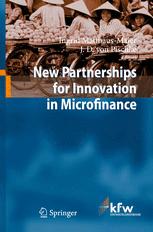

Most ebook files are in PDF format, so you can easily read them using various software such as Foxit Reader or directly on the Google Chrome browser.
Some ebook files are released by publishers in other formats such as .awz, .mobi, .epub, .fb2, etc. You may need to install specific software to read these formats on mobile/PC, such as Calibre.
Please read the tutorial at this link: https://ebookbell.com/faq
We offer FREE conversion to the popular formats you request; however, this may take some time. Therefore, right after payment, please email us, and we will try to provide the service as quickly as possible.
For some exceptional file formats or broken links (if any), please refrain from opening any disputes. Instead, email us first, and we will try to assist within a maximum of 6 hours.
EbookBell Team

4.1
40 reviewsMicrofinance has experienced dynamic development. Today, microfinance providers reach close to 100 million clients worldwide and are growing fast. New partnerships expand the impact of microfinance even further. Three types of partnerships are examined in this book, each consisting of a thematic pillar. Pillar I focuses on equity investments in microfinance, especially the possibilities for engaging private investors through structured microfinance investment funds. Rating agencies are involved in providing more transparency in this emerging fund industry. Pillar II focuses on collaboration among microfinance providers, governments, private investors and technology companies which help microfinance institutions to integrate new technologies into their business models, reducing cost and increasing outreach to clients. Pillar III covers micropensions, microinsurance and the role of securitisation for the future of microfinance.
The blossoming of microfinance to embrace a wider constituency of providers and investors, and a broader range of instruments that can reach more clients has been a very positive confirmation of the United Nation’s designation of 2005 as the year of microcredit, or more inclusively, microfinance.
ELIZABETH LITTLEFIELD, Consultative Group to Assist the Poor (CGAP)
Microfinance is increasingly attractive to private investors. Pioneering deals initiated and supported by international financial institutions and bi-lateral development agencies, subject to the discipline of capital markets, have changed the structure of microfinance investment, opening new vistas for all participants.
PETER WOICKE, former Executive Vice President, The World Bank
Expanding outreach to the poor through finance is a process of continual innovation. Advances in internet technology and new forms of payment mechanisms hold great promise. Challenges on the ground include bridging the „last mile" and upgrading the business processes or back offices of providers.
EDUARDO BAZOBERRY, Chief Executive Officer of PRODEM, Bolivia